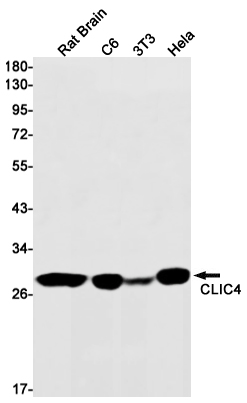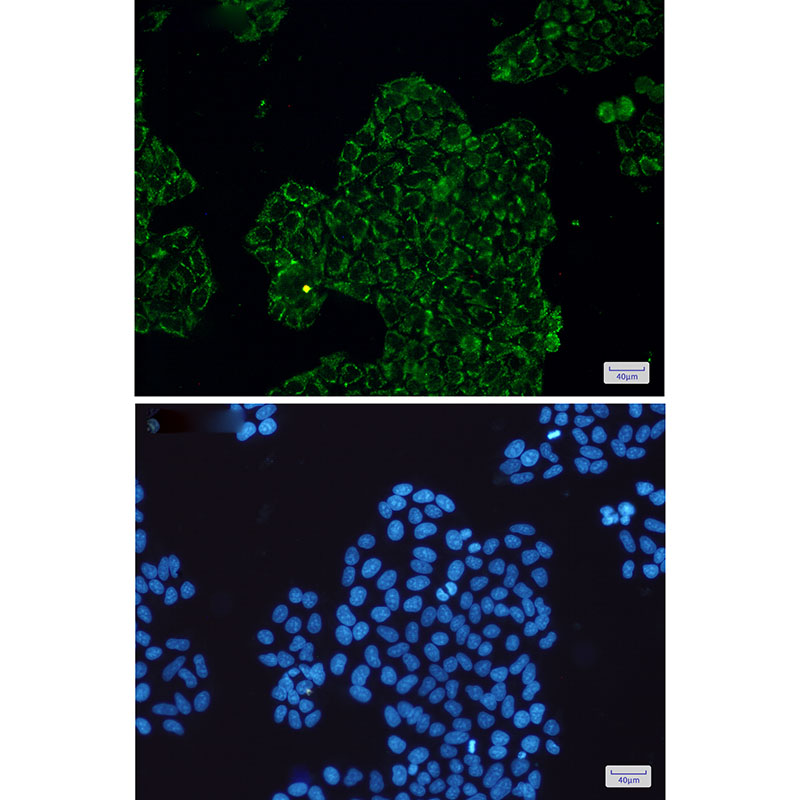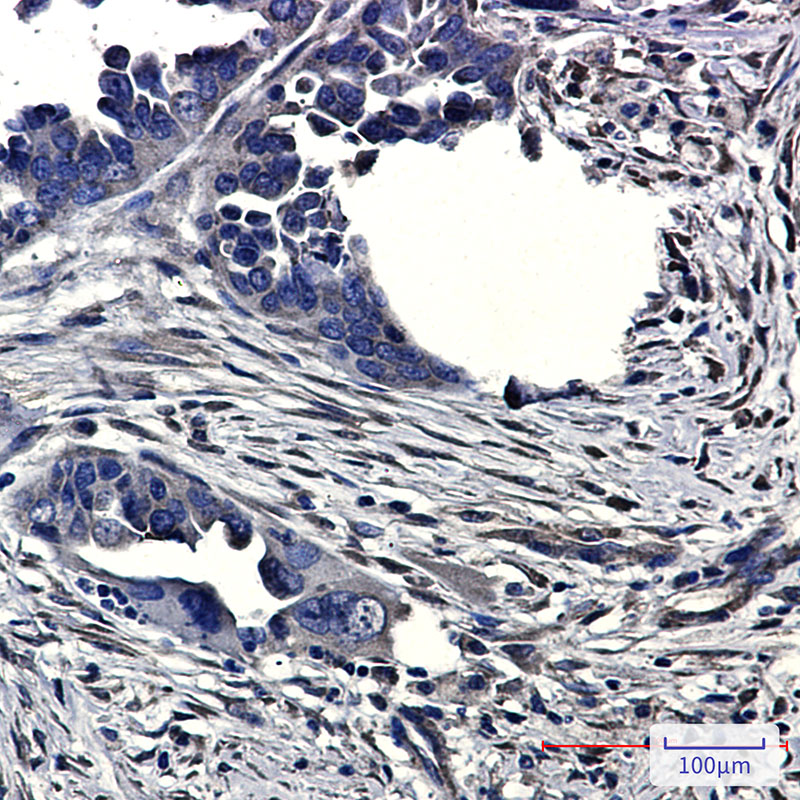


| WB | 咨询技术 | Human,Mouse,Rat |
| IF | 1/20 | Human,Mouse,Rat |
| IHC | 1/50-1/100 | Human,Mouse,Rat |
| ICC | 1/50-1/200 | Human,Mouse,Rat |
| FCM | 咨询技术 | Human,Mouse,Rat |
| Elisa | 咨询技术 | Human,Mouse,Rat |
| Aliases | CLIC4; Chloride intracellular channel protein 4; Intracellular chloride ion channel protein p64H1 |
| Entrez GeneID | 25932 |
| WB Predicted band size | Calculated MW: 29 kDa; Observed MW: 29 kDa |
| Host/Isotype | Rabbit IgG |
| Antibody Type | Primary antibody |
| Storage | Store at 4°C short term. Aliquot and store at -20°C long term. Avoid freeze/thaw cycles. |
| Species Reactivity | Human,Mouse,Rat |
| Immunogen | A synthetic peptide of human CLIC4 |
| Formulation | Purified antibody in TBS with 0.05% sodium azide,0.05%BSA and 50% glycerol. |
+ +
以下是关于CLIC4抗体的3篇参考文献及其摘要概括:
---
1. **文献名称**:*CLIC4 regulates TGF-β-dependent myofibroblast differentiation to produce a cancer stroma*
**作者**:Arasteh, S. 等 (2020)
**摘要**:该研究利用CLIC4抗体检测肿瘤微环境中成纤维细胞的表达,发现CLIC4通过TGF-β信号通路促进肌成纤维细胞分化,增强肿瘤基质的促癌活性,揭示了其在癌症进展中的作用机制。
2. **文献名称**:*CLIC4 is a direct transcriptional target of TGF-β in mediating cellular plasticity*
**作者**:Suh, K.S. 等 (2014)
**摘要**:通过免疫沉淀和Western blot实验,研究证实CLIC4抗体可特异性识别其在TGF-β信号通路中的表达变化,CLIC4通过调控Smad蛋白活性参与上皮-间质转化(EMT),影响细胞可塑性及肿瘤转移。
3. **文献名称**:*Intracellular chloride channel protein CLIC4 induces apoptosis via mitochondrial pathway*
**作者**:Fernández-Salas, E. 等 (2002)
**摘要**:早期研究利用CLIC4抗体定位其在线粒体膜的表达,发现CLIC4通过释放细胞色素C激活Caspase依赖的凋亡通路,提示其在氧化应激诱导的细胞死亡中的关键作用。
---
以上文献展示了CLIC4抗体在癌症生物学、信号转导及细胞凋亡研究中的具体应用。如需更多文献或扩展内容,可进一步补充。
CLIC4 (Chloride Intracellular Channel 4) is a member of the CLIC protein family, which shares structural homology with glutathione S-transferases but functions as ion channels or regulators of membrane dynamics. Unlike classical ion channels, CLIC4 lacks a signal peptide and primarily exists in a soluble cytoplasmic form but can translocate to cellular membranes (e.g., nucleus, mitochondria, plasma membrane) under stress or specific signaling cues. It participates in diverse cellular processes, including apoptosis, cell cycle regulation, autophagy, and differentiation, often interacting with pathways like TGF-β, p53. and NF-κB. CLIC4’s dual role in cancer—acting as a tumor suppressor or promoter depending on context—has sparked research interest, alongside its implications in fibrosis, angiogenesis, and wound healing.
CLIC4 antibodies are essential tools for detecting the protein’s expression, localization, and post-translational modifications in studies. They are widely used in techniques such as Western blotting, immunohistochemistry, and immunofluorescence. Commercially available antibodies vary in clonality (monoclonal/polyclonal), species reactivity (human, mouse, rat), and epitope specificity. Validation is critical due to potential cross-reactivity with other CLIC family members. Research applications span cancer biology, cardiovascular diseases, and developmental studies, with therapeutic targeting of CLIC4 explored in pathological conditions like pulmonary hypertension and tissue fibrosis. Proper antibody selection ensures accurate insights into CLIC4’s dynamic roles in health and disease.
×